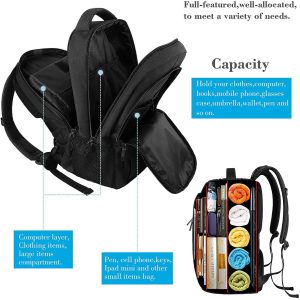1. Research Your Destination:
- Gather information about the area’s safety, potential hazards, weather conditions, and local customs before you go.
2. Share Your Itinerary:
- Inform a friend or family member about your travel plans, including your itinerary, destinations, and estimated return dates.
3. Pack a First Aid Kit:
- Carry a well-stocked first aid kit that includes essentials like bandages, antiseptics, pain relievers, and any necessary prescription medications.
4. Carry Emergency Contacts:
- Keep a list of emergency contacts, including local authorities and your country’s embassy or consulate.
5. Stay Hydrated:
- Carry a reusable water bottle and prioritize staying hydrated, especially in hot or arid environments.
6. Practice Food Safety:
- Ensure the safety of your food by washing your hands before handling, avoiding raw or undercooked foods, and practicing proper hygiene.
7. Familiarize Yourself with Navigation:
- Learn how to use a map and compass, and carry a GPS device or smartphone with offline maps for backup.
8. Respect Wildlife:
- Maintain a safe distance from wildlife and avoid feeding or approaching animals. Follow local guidelines for interacting with wildlife.
9. Know Basic Wilderness First Aid:
- Familiarize yourself with basic first aid techniques for treating common outdoor injuries like cuts, sprains, and insect bites.
10. Stay Weather-Aware: – Monitor weather forecasts and be prepared for changes in conditions. Dress in layers to stay warm and protect yourself from sun exposure.
11. Campsite Safety: – Choose a safe and suitable campsite away from hazards like unstable terrain, falling branches, or flood-prone areas.
12. Secure Food Properly: – Store food away from your sleeping area in bear-resistant containers or by hanging it from a tree in bear-prone regions.
13. Use Proper Gear: – Wear appropriate clothing, footwear, and gear for the conditions. Check equipment like tents, stoves, and backpacks for functionality before your trip.
14. Stay on Marked Trails: – Stick to established trails and avoid wandering off the path to minimize the risk of getting lost.
15. Carry Lighting and Fire-Making Tools: – Pack a headlamp or flashlight with extra batteries, as well as fire-starting tools like waterproof matches or a lighter.
16. Learn Basic Self-Defense: – Familiarize yourself with basic self-defense techniques or carry personal safety tools if you’re concerned about your safety.
17. Trust Your Instincts: – If a situation doesn’t feel right, trust your gut feeling and make decisions that prioritize your safety.
18. Respect Local Laws and Customs: – Familiarize yourself with local laws, customs, and etiquette to avoid unintentional offenses.
19. Stay Connected: – Carry a fully charged cellphone or satellite communication device for emergencies, especially in remote areas.
20. Leave No Trace: – Follow Leave No Trace principles to minimize your impact on the environment and preserve natural habitats for future generations.
Prioritizing safety during your backpacking adventures allows you to fully enjoy the experience while minimizing risks. Always be prepared, use your best judgment, and adapt to changing conditions as needed.

















